
Ambulance manufacturers continue to produce customized ambulances to handle special types of missions such as neonatal units, critical care transport, critical care pediatric units, intensive care rigs, and others.
SPECIAL REQUIREMENTS
Chad Newsome, national sales manager for P.L. Custom Body and Equipment Co. Inc. (PLCB), says that with special-mission ambulances, typically his company is faced with bringing the critical care components of a hospital onto the road in the patient module of an ambulance. “The critical care market right now is an expanding marketplace with customers asking for all kinds of specialized life-critical equipment in their rigs,” Newsome says. “And as manufacturers, with all the electrical equipment being put in the patient box, we have to be very careful in designing the electrical system both for 12-volt and 110-volt components.”

1 Braun Industries built this critical care transport ambulance on an International chassis for Duke (NC) Life Flight. (Photos 1 and 2 courtesy of Braun Industries Inc.)
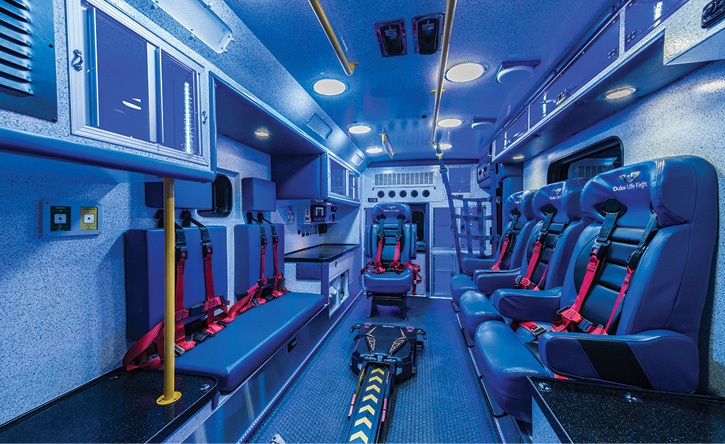
2 The interior of the Duke Life Flight critical care transport ambulance.
Scott Barnes, vice president of sales for REV Ambulance Group, points out that one of the biggest requirements REV sees in special-mission ambulances is that they usually are bigger trucks built on heavier chassis than the average advanced life support (ALS) or basic life support (BLS) ambulances. He notes that of REV’s eight ambulance brands, only Front Line and Marque don’t build specialty units, while AEV, Leader, Horton, Wheeled Coach, Road Rescue, and McCoy-Miller brands do. “They are building units devoted to critical care, neonatal care, pediatric units, intensive care ambulances, and bariatric units,” Barnes points out.
Barnes says REV gets “very involved with the customer, fleet manager, oversight medical staff, and transport medics to determine what they want to accomplish with an ambulance. On the bigger type trucks—a four-door cab and chassis by International or Freightliner—they might want seating for a driver, paramedic, and two nurses in the cab. In the back they might want seating and accommodations for one or two transport incubators, a mother, a nurse, a doctor, and a respiratory therapist. Those considerations determine the length of the body for that chassis, the location of the seating, and the equipment placement.”
SPECIFIC MISSIONS
Chad Brown, vice president of sales and marketing for Braun Industries Inc., says Braun has been building a lot of critical care transport ambulances recently. “We’re busy with those kinds of units, especially for hospital organizations that are looking for neonatal units and critical care transport rigs,” Brown notes. “These ambulances are very mission-specific, like the neonatal units for [premature birth babies (preemies)] and infants, pediatric care ambulances, and bariatric ambulances, which may require special loading systems.”

3 AEV built this pediatric critical care ambulance for Mercy Children’s Hospital St. Louis (MO). (Photos 3-10 courtesy of REV Ambulance Group.)
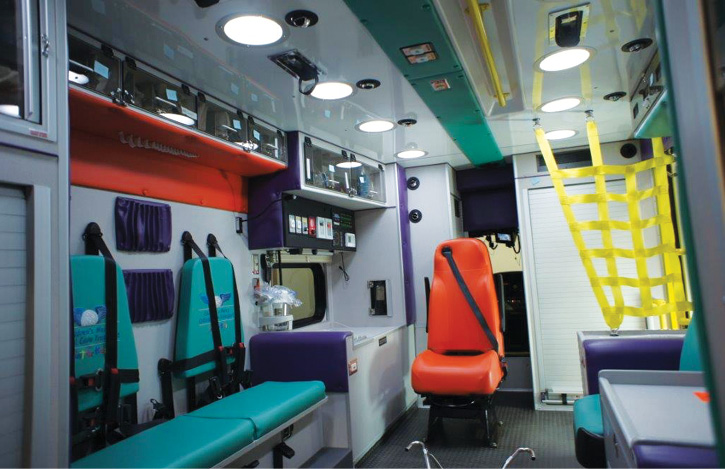
4 The interior of the Mercy Children’s Hospital St. Louis pediatric critical care rig.
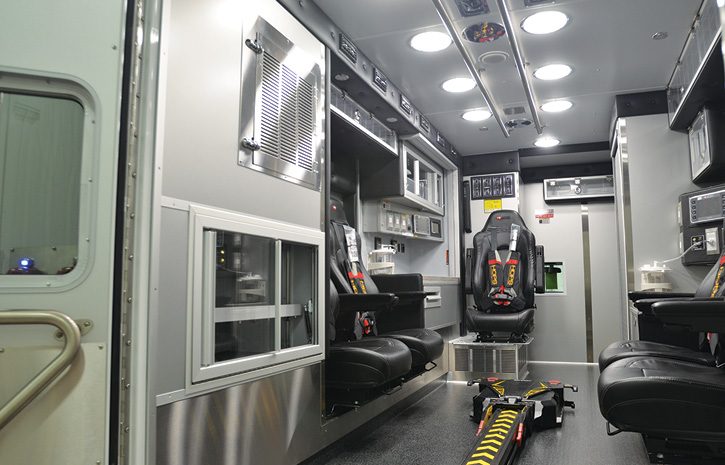
5 The interior of a pediatric critical care ambulance built by Horton for Children’s Hospital of San Antonio (TX).

6 Road Rescue built this critical care transport ambulance for Vidant EastCare (NC).
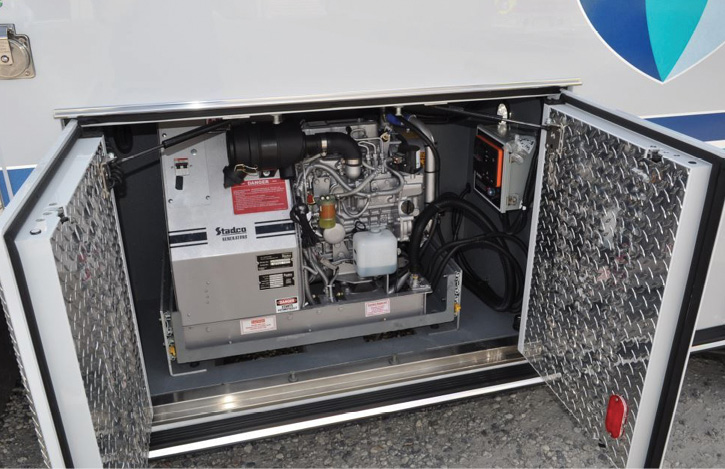
7 The critical care transport ambulance Road Rescue built for Vidant EastCare carries a Stadco generator in an exterior compartment to handle electrical needs if the rig loses chassis power.
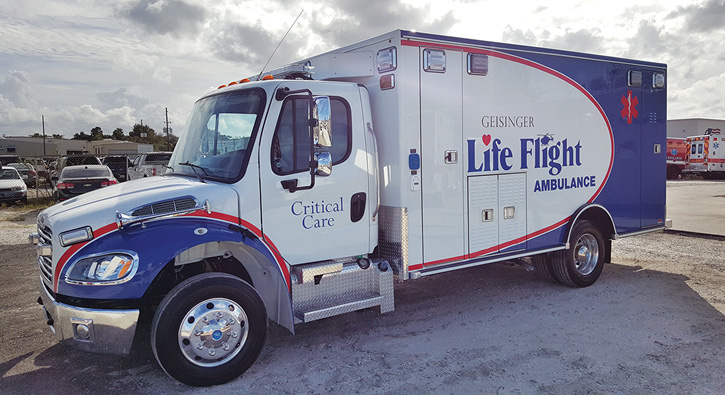
8 This critical care transport ambulance was built by Road Rescue for Geisinger Life Flight (PA).
Brown notes that Braun has installed a Stryker PowerLOAD system on some neonatal ambulances because it offers a special cot that can carry an incubator. “For bariatric ambulances, we install a ramp and Mac Lift power lift and then work with either Stryker or Ferno about the special load required to be moved on the stretcher and how it would work with their lift system,” he says.
Randy Smith, director of operations for Life Line Emergency Vehicles, says that many special-mission ambulances are being fitted with video cameras to allow better communication between the rig and a hospital. “They install cameras where the patient can be observed more closely on a remote basis by a physician in the hospital,” Smith says. “Minneapolis (MN) Children’s Hospital is working on a system that uses multiple avenues of communication in a critical care transport ambulance, such as cellular, WiFi, and radio transmissions.”
Smith points out that many special-mission ambulances have redundancy built into their onboard power systems. “They’ll put in multiple inverters and chargers, a generator to take over in case they lose chassis power, and multiple air conditioning systems, especially for when they are waiting on the tarmac to transport a critical care patient.”
Barnes says that critical care transport and intensive care ambulances can end up carrying a lot of technologically advanced equipment in the patient box. “We’ve seen onboard medical air, [liquid oxygen (LOX)] systems, balloon pumps, special blending air units for incubators, and onboard generators to provide power redundancy,” he says.
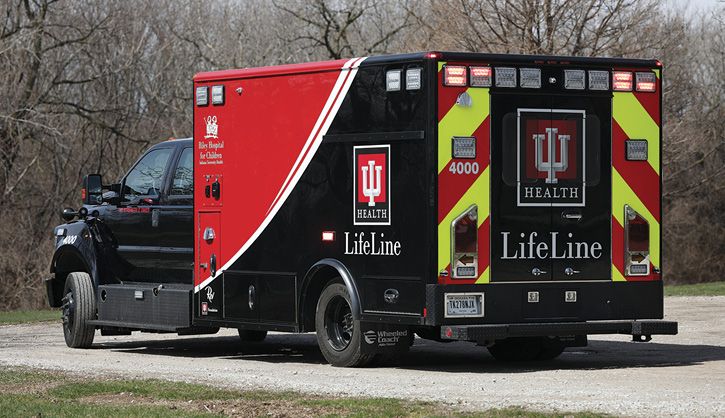
9 Wheeled Coach built this pediatric critical care ambulance for Riley Hospital for Children (IN).

10 The interior of the pediatric critical care ambulance that Wheeled Coach built for Riley Hospital for Children.

11 Life Line Emergency Vehicles built this pediatric trauma center ambulance on a Kenworth chassis for Children’s Minnesota (MN). (Photos 11-16 courtesy of Life Line Emergency Vehicles.)

12 The interior of the Children’s Minnesota pediatric trauma center ambulance.

13 Life Line Emergency Vehicles built this pediatric critical care ambulance on a Ford F-550 chassis and cab for Driscoll Children’s Hospital (TX).
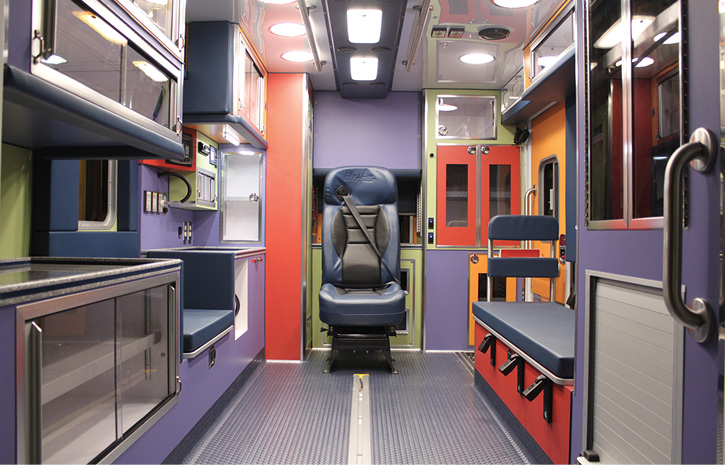
14 The interior of the Driscoll Children’s Hospital rig.
Brown notes that Braun customizes 100 percent of special-mission ambulances for its customers. “We work with the department to identify their needs, then work with our suppliers to bring in the equipment to meet those needs,” he says. “For a critical care transport ambulance, you likely will see balloon pumps, suction units, and a lot of other technology in the module as well as an auxiliary power unit to run that equipment and the air conditioning/heating through a self-power battery source.”
INTERIOR AESTHETICS
Smith says that Life Line recently delivered a pediatric transport ambulance and a neonatal care unit to two departments in the Northeast. “One of them was painted with blue sky and white clouds to have a calming effect,” he points out, “while the other had 1,500 tiny holes in the ceiling with fiber optic lights behind them where they could program the lighting to simulate shooting stars and fireworks.”
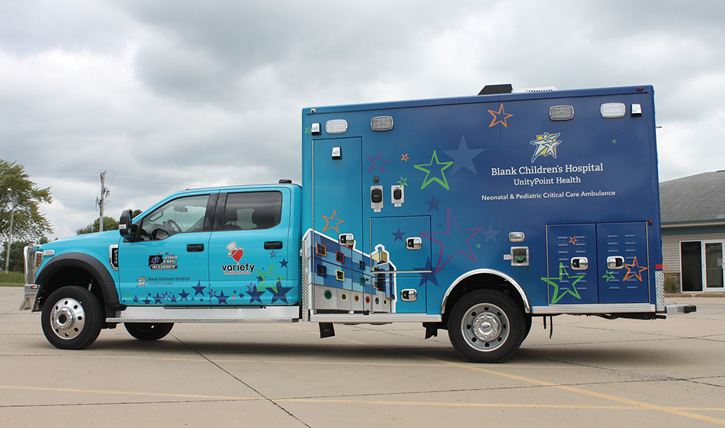
15 Life Line Emergency Vehicles built this neonatal and pediatric critical care ambulance on a Ford F-550 chassis and cab for Blank Children’s Hospital (IA).

16 The ceiling of the Blank Children’s Hospital neonatal and pediatric critical care ambulance has 1,500 fiber optic lights in the ceiling that can simulate fireworks and shooting stars.
Likewise, PLCB has used the blue sky with fluffy white clouds motif on the interior of a pediatric care transport ambulance it built for a hospital in Michigan. “Pediatric units tend to use a lot of vibrant colors,” Newsome observes, “because an ambulance that’s less antiseptic looking is more soothing to the kids.”
Barnes agrees on the calming effect that interior decoration can have on a young patient. “One theme that we did was a Noah’s Ark theme,” he says, “where there were cartoon animals inside the vehicle for a more subdued and calming interior and other cartoon animals as wraps on the exterior. We also have done entertainment for children with touch screens, DVD players, and video screens that drop out of the ceiling.”
Smith notes that because some premature babies “are about the size of a soda can, we are working on an air ride system that suspends an isolet for transport purposes. The system would be part of the isolet that attaches to the cot framework and would minimize shaking while en route.”
ALAN M. PETRILLO is a Tucson, Arizona-based journalist, the author of three novels and five nonfiction books, and a member of the Fire Apparatus & Emergency Equipment Editorial Advisory Board. He served 22 years with the Verdoy (NY) Fire Department, including in the position of chief.

